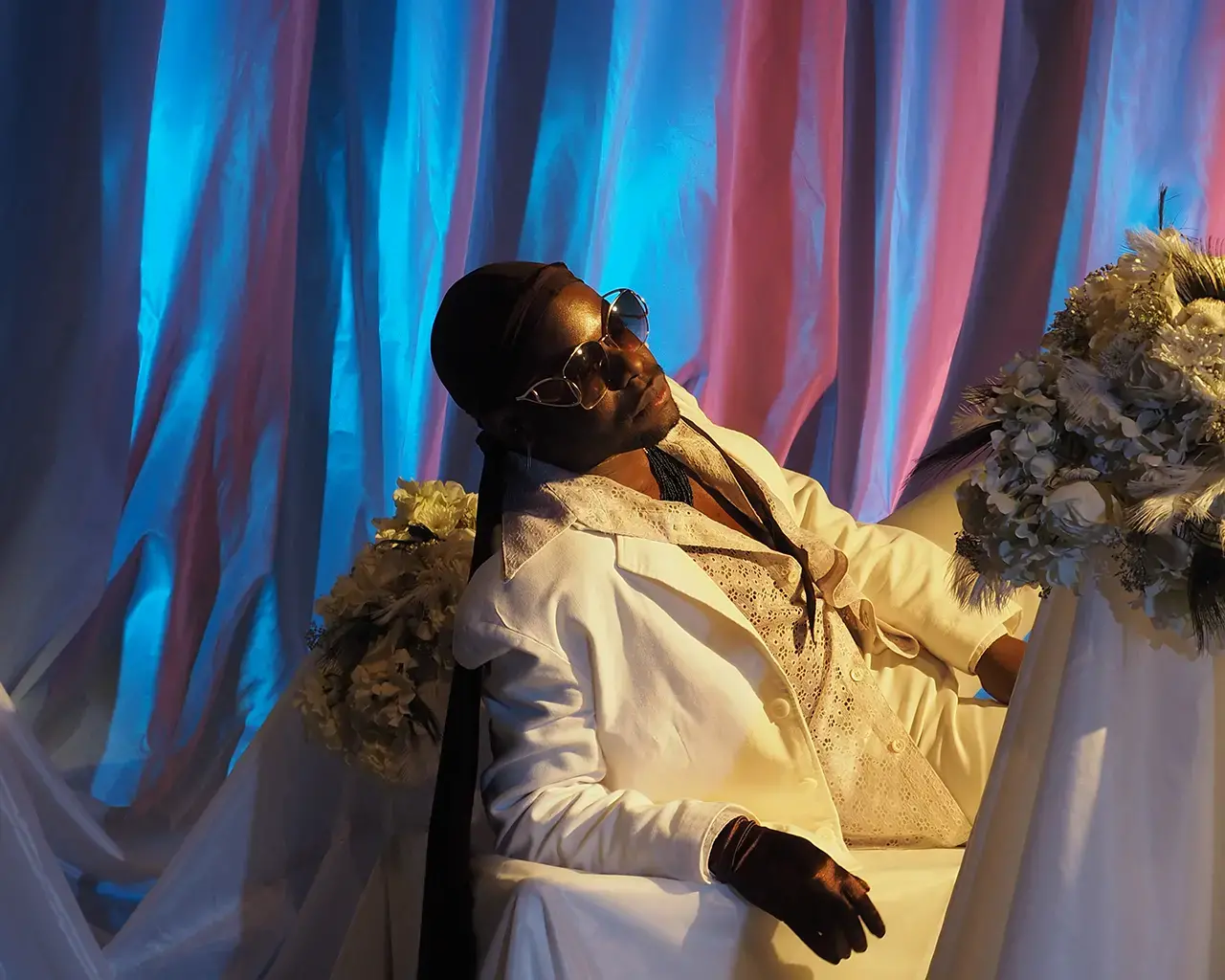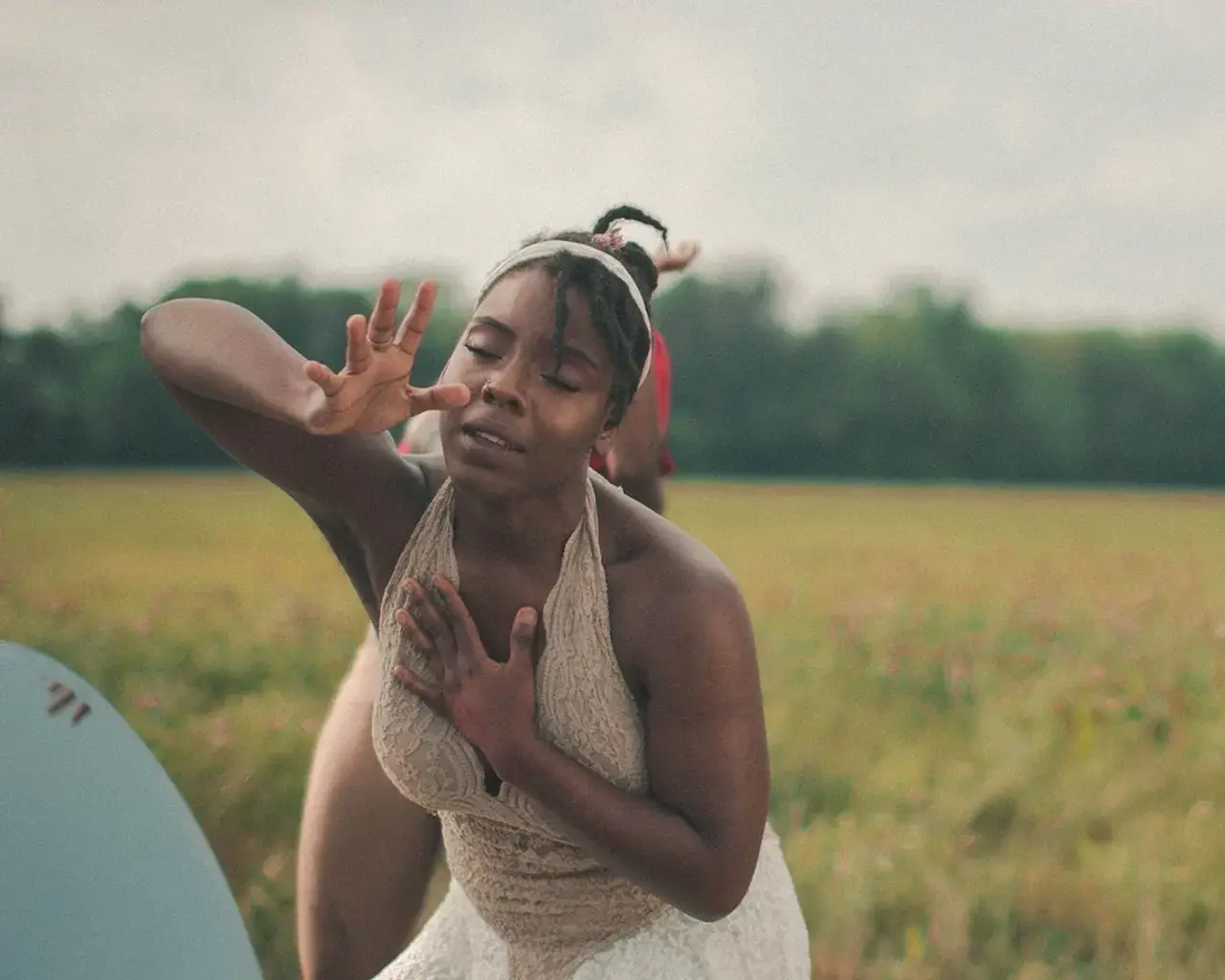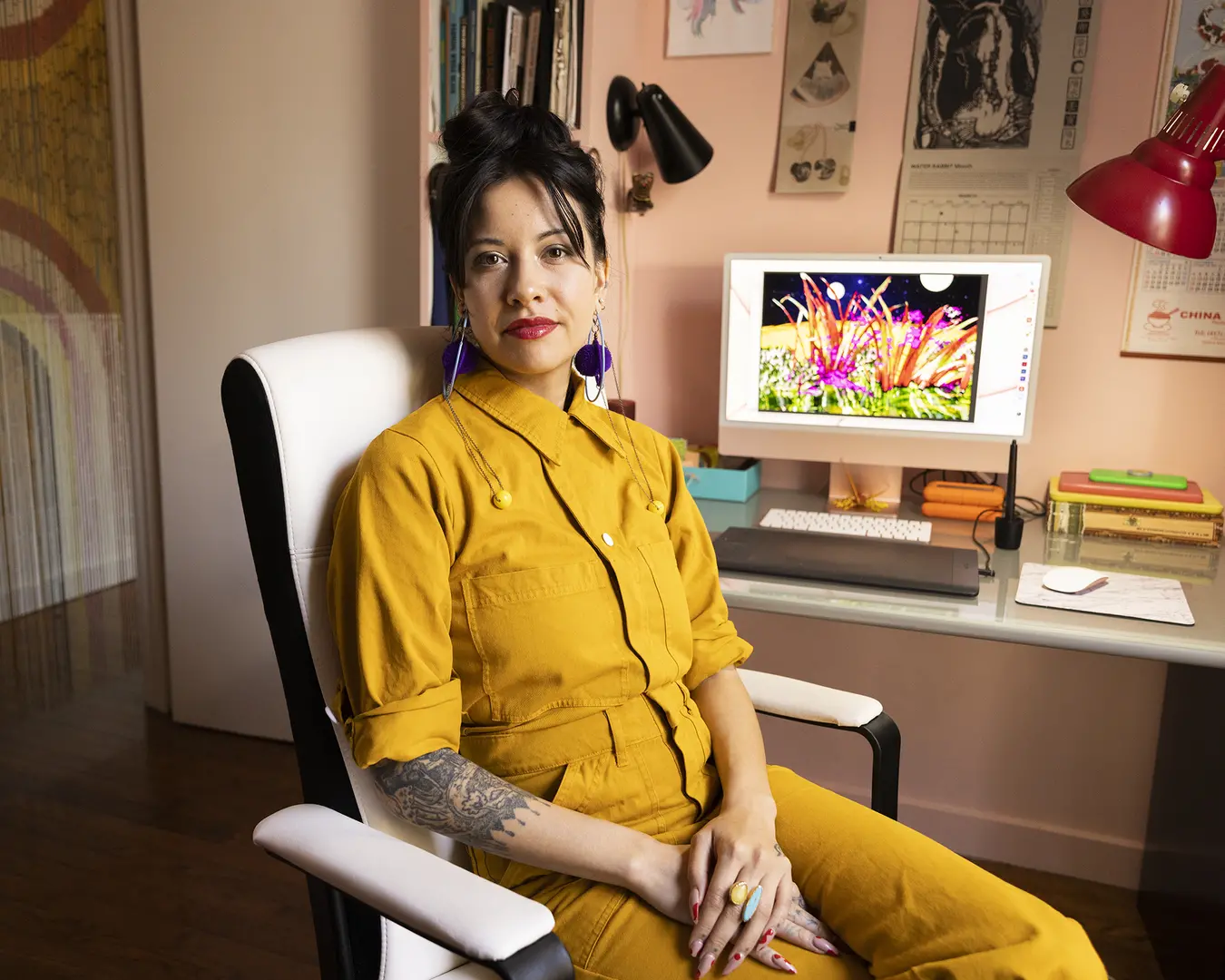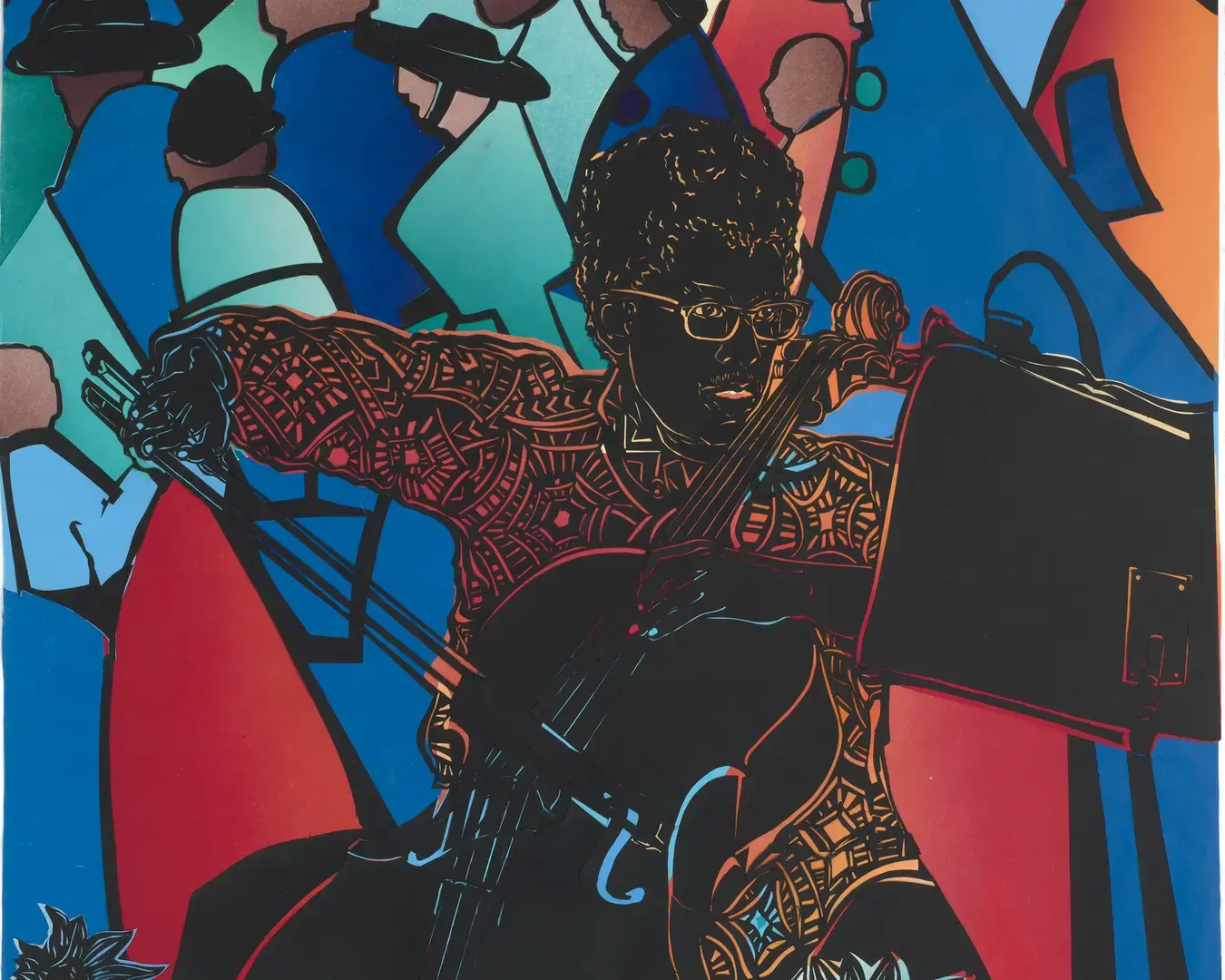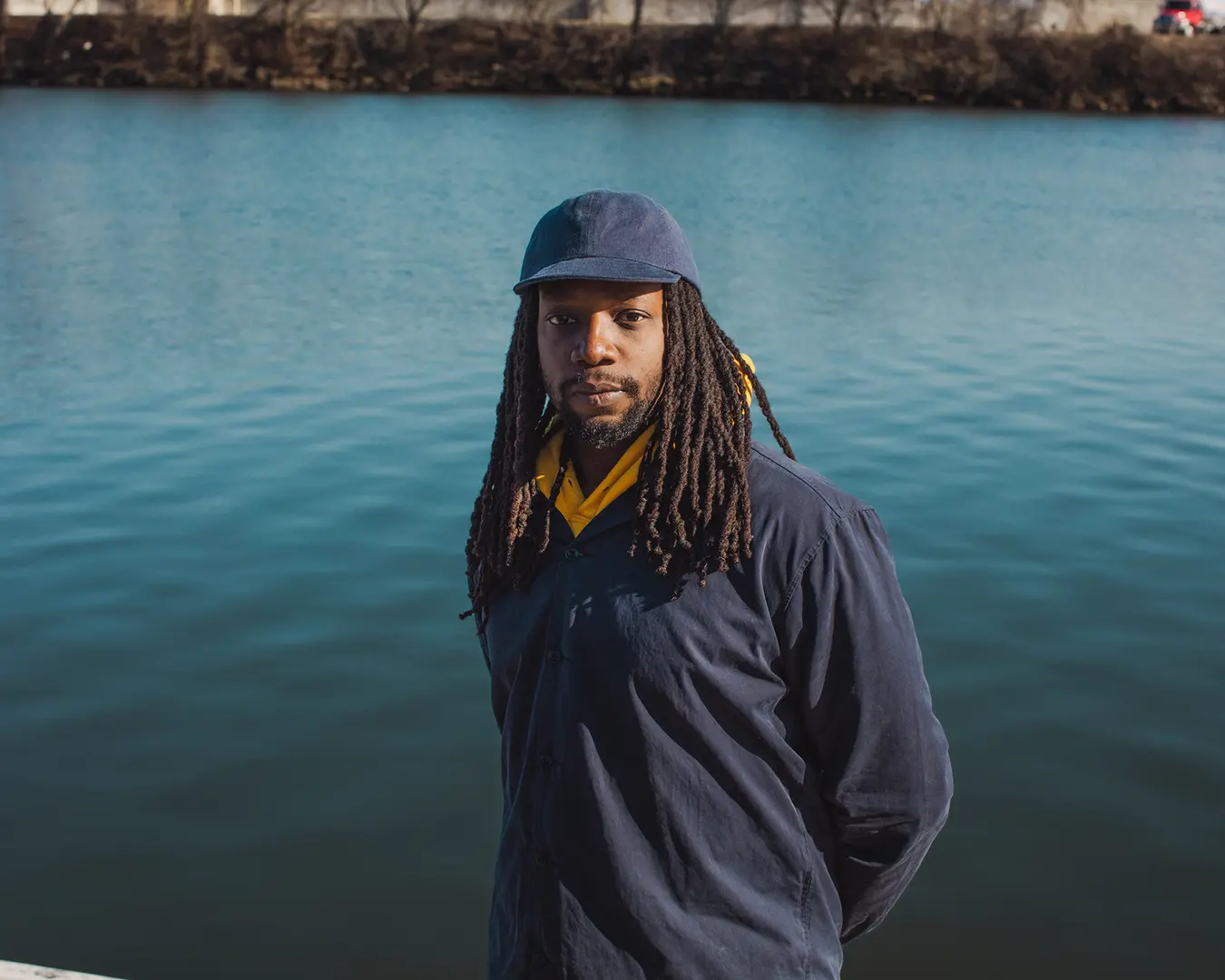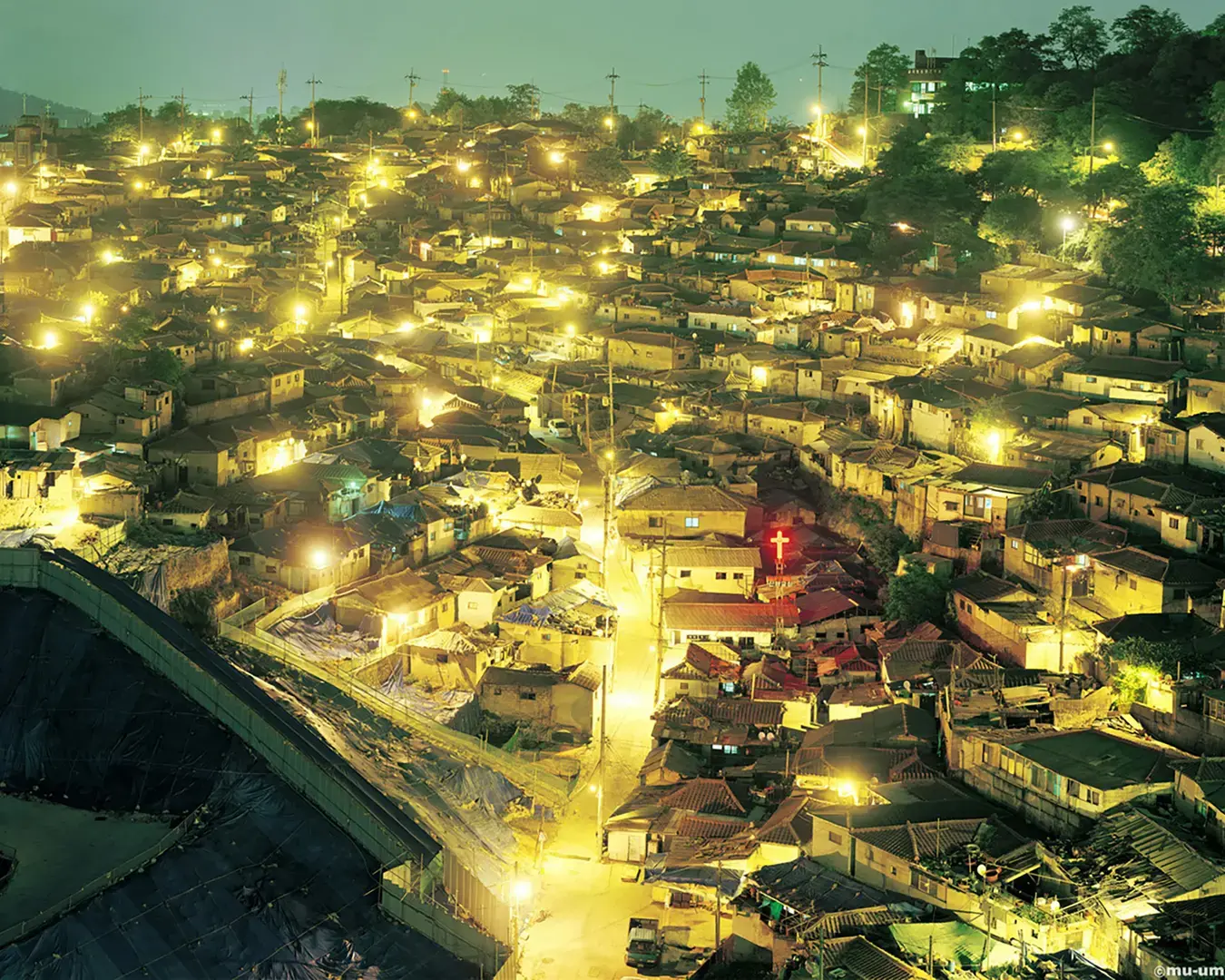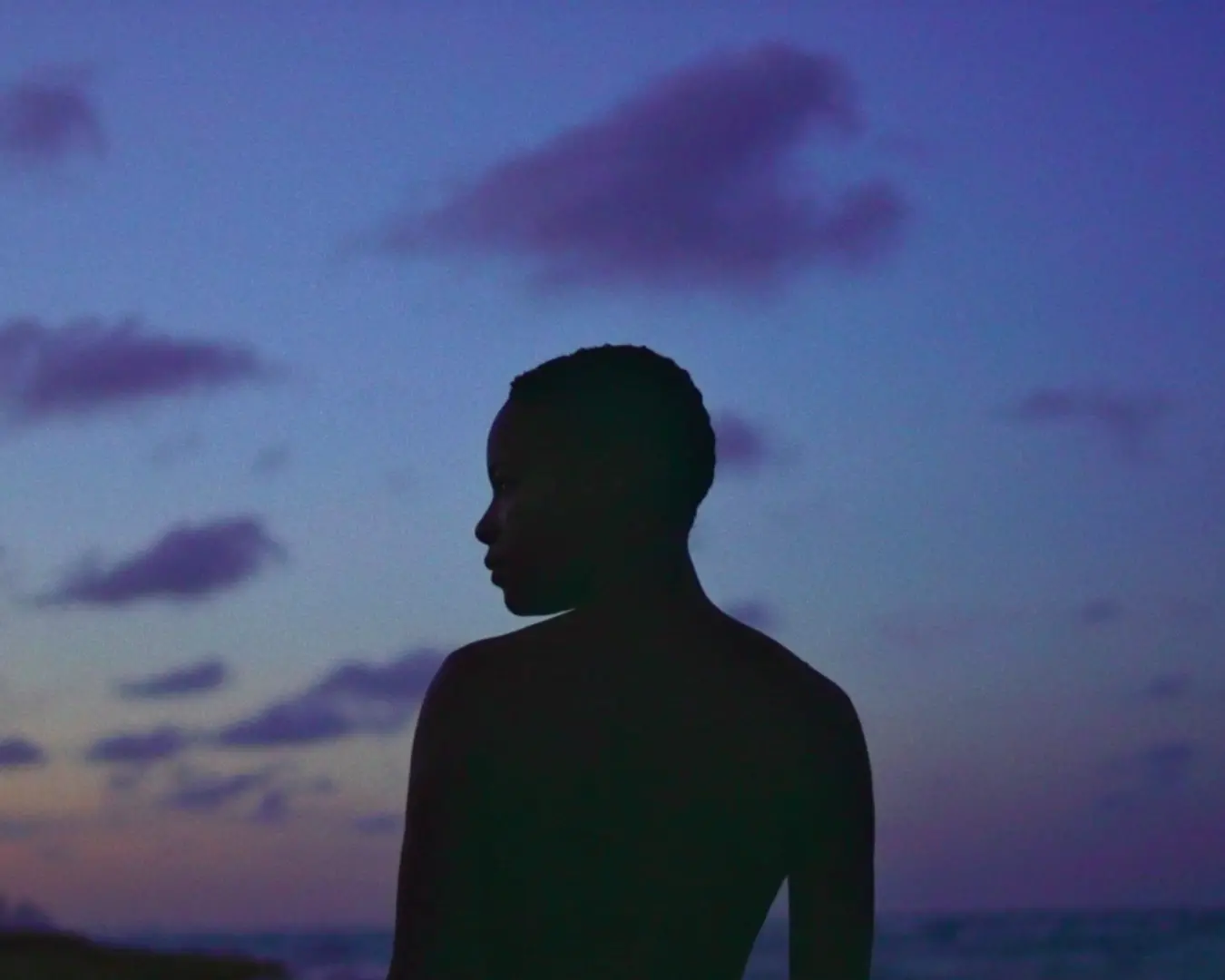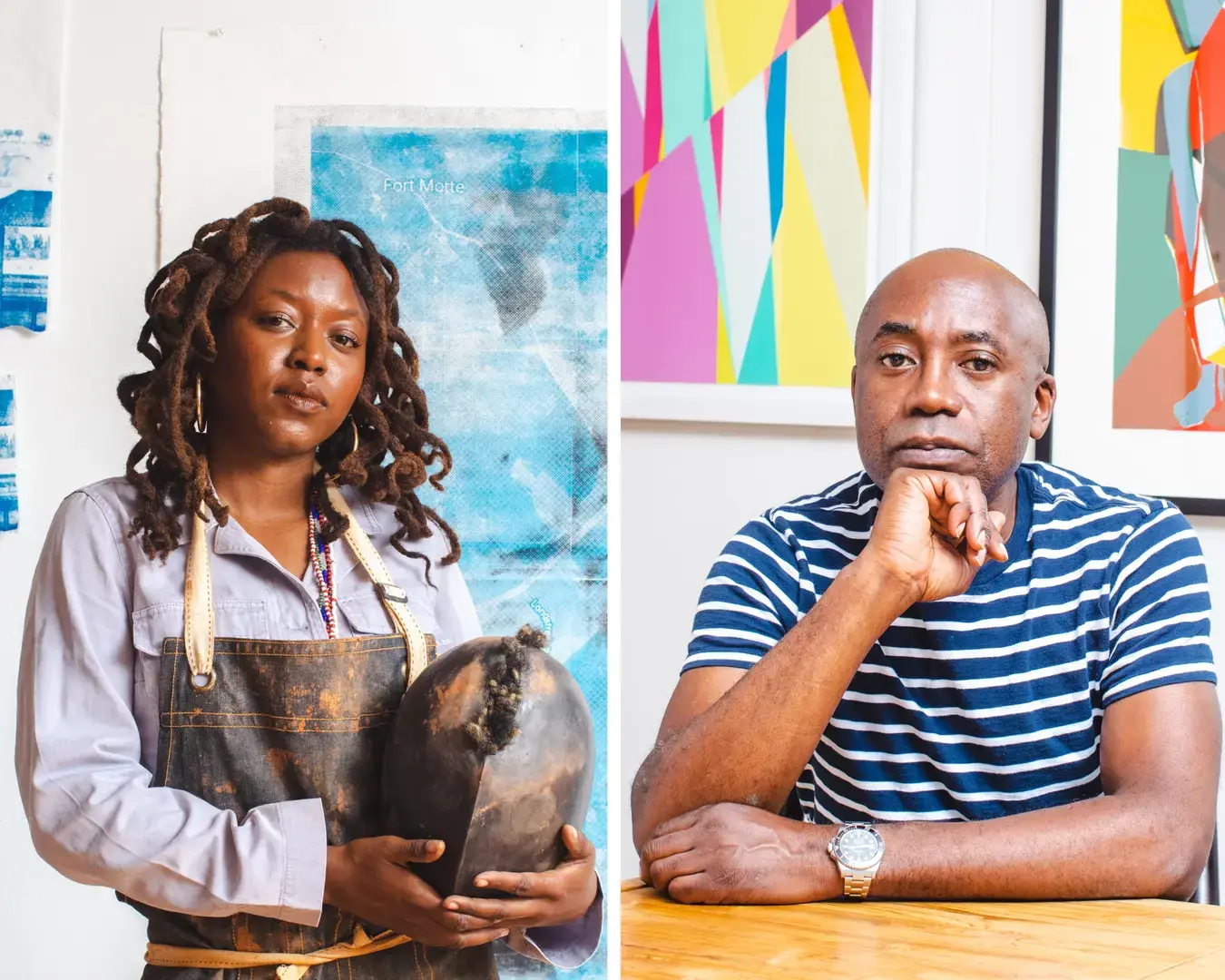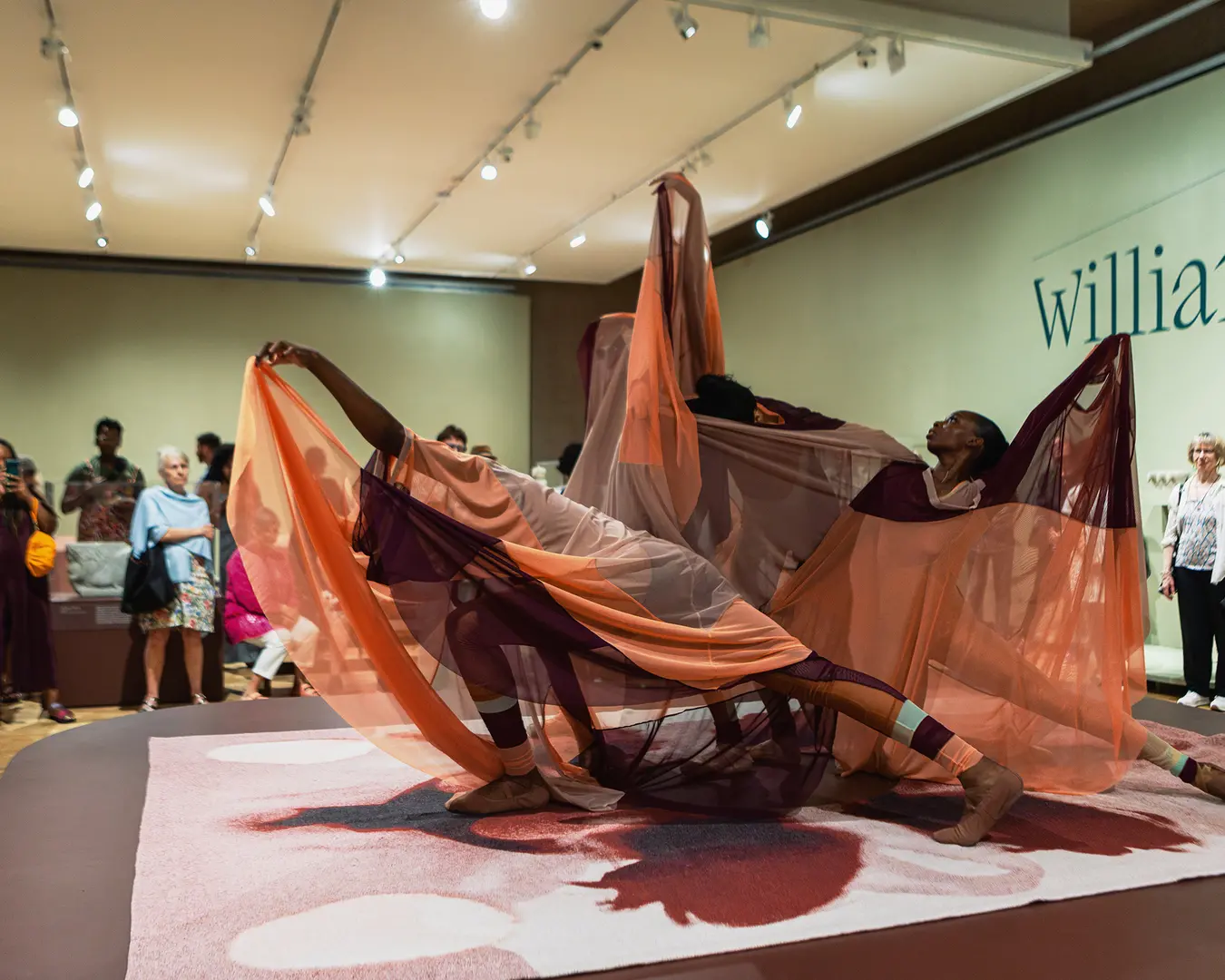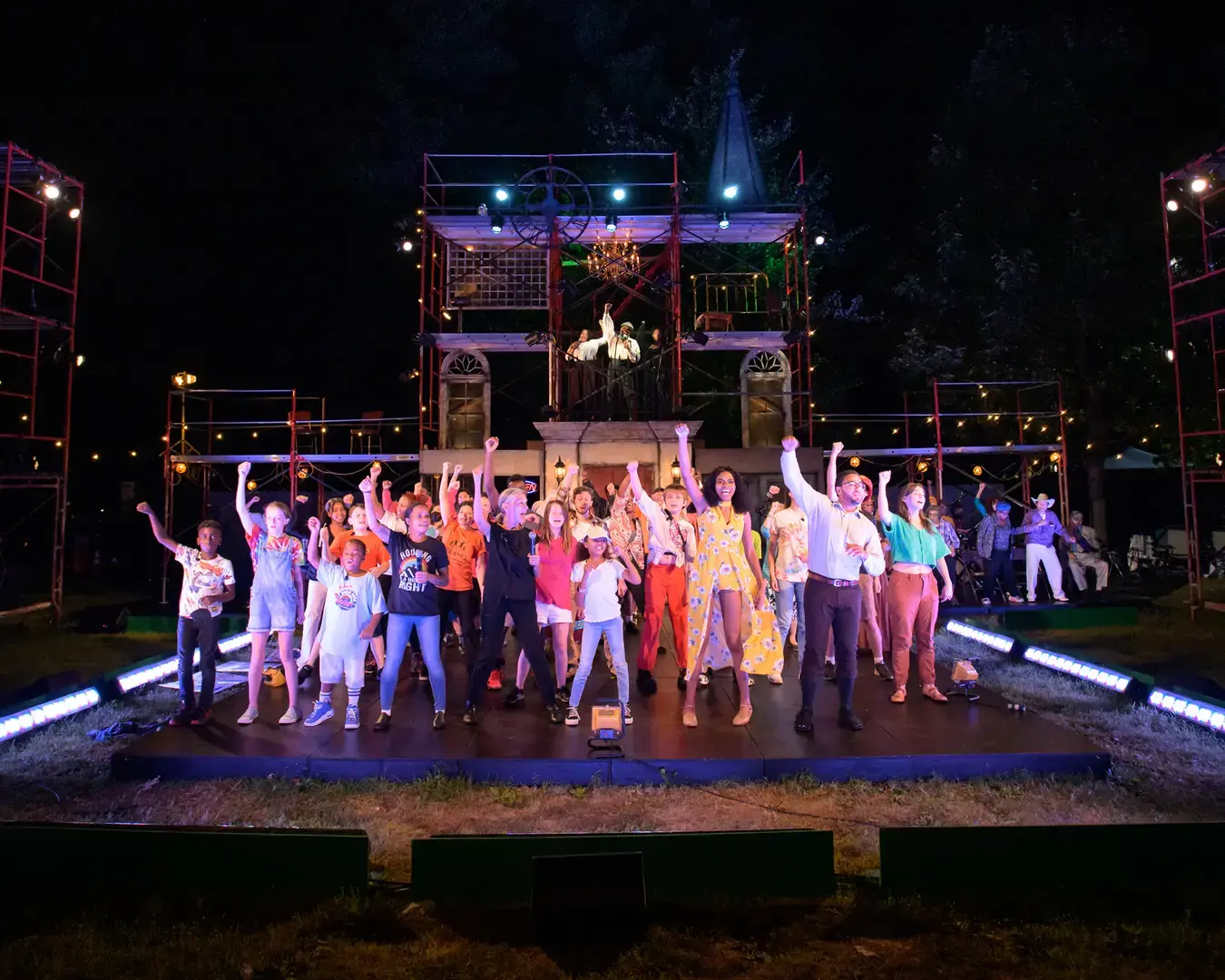The act of creation takes on a multiplicity of forms. In our ongoing artist interview series, we illuminate the distinctive artistic practices, influences, and creative challenges of our Pew Fellows, who represent a diversity of perspectives and creative disciplines.
In this installment, three performance artists—angel shanel edwards, Jaamil Olawale Kosoko, and Alexandra Tatarsky—discuss the audiences that motivate them, their dream collaborators, and the idea of “leakiness” between disciplines.
About the Artists
Edwards creates movement work, film, and writing that celebrate the everyday, embodying the textures of Black queer and transgender existence, paying close attention to the overlooked joys and obligations of daily life in marginalized communities.
Kosoko’s performance works incorporate elements of dance, music, poetry, film, and visual art to reflect on Black and queer identity, often employing historical events and archival relics to speak to contemporary life.
Tatarsky’s work blends performance art, comedy, physical theater, and clown practices to probe the construction of meaning, self, and community, playing with perceptions of language and narrative structure and embracing humor to reveal vulnerability and humanity.
For whom do you make your work, and what is your relationship to that audience?
Edwards
This question is exciting for where I am as an artist right now. I believe in building worlds where Black folks are cared for and resting and laughing and playing. I think my work is for that world, the rigor and demand that world requires to build. My work is for myself, too; a portal to see myself with less judgment and more attention, to be in constant witness of what I’m shedding and becoming. As a transgender person, self-witness is hugely cathartic, complicated, and flirtatious. Creating work for myself and my multitudes as an audience means that I get to charm myself, fall in love with myself, and experience my work as others would!
Tatarsky
I make my work for anxious people, depressive people, people bummed out by the state of the world. I make work for people who love compost and who love clowns. Or for people who hate compost and hate clowns. I make work for people who are tired and want to laugh at the end of a long day and who are tired and want to cry at the end of a long day. I make work for weirdos and for people who are weirded out by weirdos. But mostly, I make work for the kids I grew up with; for my family and my block. I can’t help it: I want my gramma to love it. I want my little brother to love it. I want my neighbors to love it. I am desperate to be loved by an audience. But I also want them to be a little freaked out.
Kosoko
Creatively, I orient my work towards the non-living, with the understanding that living beings also participate in the witnessing of my work as well. I create as a means to express a spiritual interdimensional connection to my ancestors and guides. It is an extension of what Christina Sharpe calls “wake work.” For me, the ancestral plane consists of kin: my mother, father, brother, grandmother, etc. They are literally in the work as well, so I have to tend to them always.
How do the threads of other artistic disciplines intersect with your work as a performance artist?
Kosoko
They interconnect deeply at the level of craft and concept. My work borrows from different genres to create a new way of forming personal abstraction. The biomythography as a framework helps me to give shape to this way of putting ideas together. For instance, early in my research process when I’m writing, I figure out how language might tell the story, but I might decide (when words are failing to get at an idea) that I need to move to pouring paint or singing a song to explore a different way towards articulating an idea, feeling, or story.
Tatarsky
I’ve become very excited by the idea of leakiness, that a leak, simply by leaking, demonstrates the porousness of containers and categories. I mean, I have my loyalties to the medium of performance, and the particular terrors and transcendent thrills of being present with an audience, but my performances draw on so many other practices: installation, sculpture, poetry, gardening, teaching, gleaning. I’m trying to be leaky. Drippy disciplinarity. I’m trying to loot from all the disciplines I can.
I think of [performance art collective] Poncili Creación, who say that the puppeteer is so important because the puppeteer holds onto the knowledge of all the art forms: they sculpt the set and props, compose the music, paint the backdrops, craft the story, dance the movements, tell the jokes, manage the logistics and economics of touring. Historically, in times of widespread censorship, puppeteers are allowed to work because it is thought that they merely entertain children and thus pose little political threat. And so they help all subversive art survive, under the guise of foolishness. I feel the clown does this as well.
Edwards
Since the pandemic, I have been wrapped up in the question: What kind of performance artist can I be? In what ways can I translate “the stage?” Can I simulate an audience? How can I make the experience of performing fuller? Am I still a performance artist if I am performing drastically differently? These questions often find answers in my other creative disciplines. As I’m exploring my relationship to “traditional” or “binary” performance structures, I look to filmmaking, writing, photography, and sculpture as tools to amplify and alchemize my performance work. And to also help me shape and form the kind of multidisciplinary performance artist I’m moving toward being.
If you could collaborate with anyone alive today, who would it be?
Tatarsky
I would like to collaborate with mycologist William Padilla-Brown to help me design a mossy hut that sprouts edible mushrooms. And then I would happily give up performing and just be a garden gnome. People could visit me and, ok, I might sing them a little song. But mostly we would just sit around eating mushrooms sauteed in butter and huffing handfuls of dirt.
Kosoko
I would collaborate with Jeremy O. Harris on a limited-run Broadway show starring Oprah Winfrey. Moses Sumney would be the musical director. I’m really interested in how all of these incredible people have created very unique stories of self-actualization.
Edwards
Moses Sumney! I appreciate them as an artist and am often captivated by their choreo-visual-sonic work. Their outdoorsiness and interest in wandering, relationships, and water all resonate with me. Moses Sumney is captivating, and I’ve loved seeing how their work grows. I think collaborating would be so much fun, but I’d also learn how to take up more space in my making. I think I’d be able to offer a sort of chaos, dirtiness, drunkenness, and play to what we would make!
What do you wish people would ask you about your work? Or, what’s the one thing you want people to know about what you do?
Edwards
I’m deep in the process of existing as an artist. I wish people would ask me: What does process have to do with my performance work? What does presence in day-to-day life have to do with who you are as an artist? Who are you when you are not performing? In what ways do you blur the line between process/presence and performance?
I'm a young working artist, 27 years old. I am remembering how to live creatively instead of just making creatively. In remembering that, it's been so clear to me that I love living creatively, navigating conflict, creating a home space that feels juicy and aligned, falling in and out of new routines, and staying sober. This is a significant part of my process in making. I've kind of redesigned what making work looks like for me—my presence toward myself as my process, as my art making. I think I have to ask, what is performance? I'm still figuring that out for myself. Maybe I am always performing? Maybe there's always a glimmer of glamour in the things I do and also mundanity? That could be why I feel so blurred around process/presence/performance: my performances are becoming more conversational, casual, and intense. My performances derive from dance sessions in my bedroom and notes from my notes app. I take the art of selfie-taking very seriously.
Tatarsky
I want people to know that the work is about unmaking, undoing, collapsing, rotting: narrative, language, structures, matter. I want people to know that I’m starting a firm called Harlequin Scraps Compost Consultants (or maybe it’s called Clown Dreams Rot Co.) and I will happily come to your house and talk with you about setting up an at-home composting system. I want to help us welcome decay and disintegration into our lives, to find intimacy and enjoyment with the falling apart. I am trying to do this myself, though it is often very hard.
Kosoko
The work is very personal and intimate and is a way for me to understand something about being transient, always moving in between states and categories. I am trying to constantly open up new pathways to engage in research and community.
Is there a question you’d like to ask your fellow artists about their practices?
Edwards: What’s keeping you anchored and rooted in creative practice in the midst of the challenges the world is experiencing right now?
Kosoko
Making sure that I continue to create time for rest, focusing on my creative vision for my practice, and practicing loving partnership and collaborations help me to feel grounded.
Tatarsky
Mostly my answer is: oof! It's rough. But as I get older, I find that my faith or belief or whatever in art-making actually grows. The other day I guess I was ranting and someone said to me, “Why don't you become a lawyer so you can actually do something about the things that get you so upset?” And I was surprised by the feelings that came up for me. No disrespect to lawyers—I think their work is so vital and fascinating and also a form of creative practice! But I was just like WHAT?! You think artists (or, in my case, clowns) are not out here actually doing something about the things that get us so upset? Our work is doing something! I surprised myself with my own conviction that art powerfully shifts and shapes paradigms and realities. So I've been holding onto that reaction to remember that I do really believe in this life. Also, baths.
Kosoko: How do you know when an idea is strong enough to push forward in research? How do you know when it’s done?
Tatarsky
I must confess that I'm never sure an idea is strong enough, and the research never feels done! But maybe those two things are related? If the research still doesn't feel done, then that means I must still be interested, and that means maybe the idea is strong? If the research feels done then...I'm over it. The idea no longer feels alive and itchy and begging to be dealt with. But I am curious to push back a bit on this idea of strong ideas in the first place. I'm not quite sure that a piece for me is about an idea or in pursuit of ideas. There are lots of ideas in it! But more often, I find the grist of it is coming from somewhere else: the groin, the heart, the belly—more than the head. And not to say these things are so separate! One can think, I think, with the pelvis, the chest, the gut. But your question makes me think maybe I'm interested in sloppy ideas, wet ideas, ideas that don't make sense or don't work or lead one in spirals. Weak ideas.
Edwards
Maybe I have a strategy of being with an idea, not pushing or pulling it, and perhaps it will accelerate on its own? Maybe the idea gains strength concerning where we are in our lives? Maybe an idea is finished or dies when it is ready? I think I'm trying to say that my ideas are autonomous in some ways, and with that framing, I give myself less pressure to move an idea in any direction. I also believe that all my little works and ideas are somehow related and that they're coming out and waiting to be pieced together to become stronger and more evident as a collective piece of work, each piece acting as research for the other? And maybe in that way, it's never complete? I check in on ideas that feel more dormant, give them some water and snacks, and wait until I feel a hunger to feed them fully. I trust in the timing of the idea.
Tatarsky: How do you deal with the void? Like, what are some methods, tools, tricks, techniques you’ve developed for finding and following the impulses that might become a piece?
Edwards
I am still very in this process. So my first and immediate response is patience. Reframing the space between knowing how a piece will come forward and its completion as a rest stop, a field of flowers you should smell and sit by? I don't know; I've had to offer myself so much grace in the not-knowing/flailing I've felt these last few years as a performance artist. Redefinition and self-determination are daily practices. It's patience and making my bed in the morning, and when something comes, I let it through, I don't edit much, I stay up late if I have to, I let it be finished rough, I let my impulse be the act of precise listening and channeling, as opposed to a sort of precision of making. I make messy things, and that's a strategy for finding and following impulses that become a piece. Or at least that messy thing is a generous starting place for a piece to derive.
Kosoko
I simply start the work. Everything else that follows is instinctual.
Where to See the Artists' Work
Kosoko curated the exhibition Portal For(e) the Ephemeral Passage, on view at the Wexner Center for the Arts in Columbus, OH, through August 14, a series of “installations and interconnected events building on Black feminist knowledge, queer theory, and sacred rituals of intimacy and wellness.” Earlier this year, they published Black Body Amnesia: Poems and Other Speech Acts, which “mixes personal history, biography, and mythology to tell a complex narrative rooted in a queer, Black, self-defined, and feminist imagination.”
Tatarsky will perform their newest piece, DIRT TRIP, as part of Cannonball Festival at Icebox Project Space on September 4, 10, and 11. They describe the work as “a lecture/diatribe/dance on clowns and compost and American fears of both, exploring the anxiety around in-between, ambiguous, or breaking-down states.”
Edwards is pursuing study and not currently planning to perform publicly in the next year.
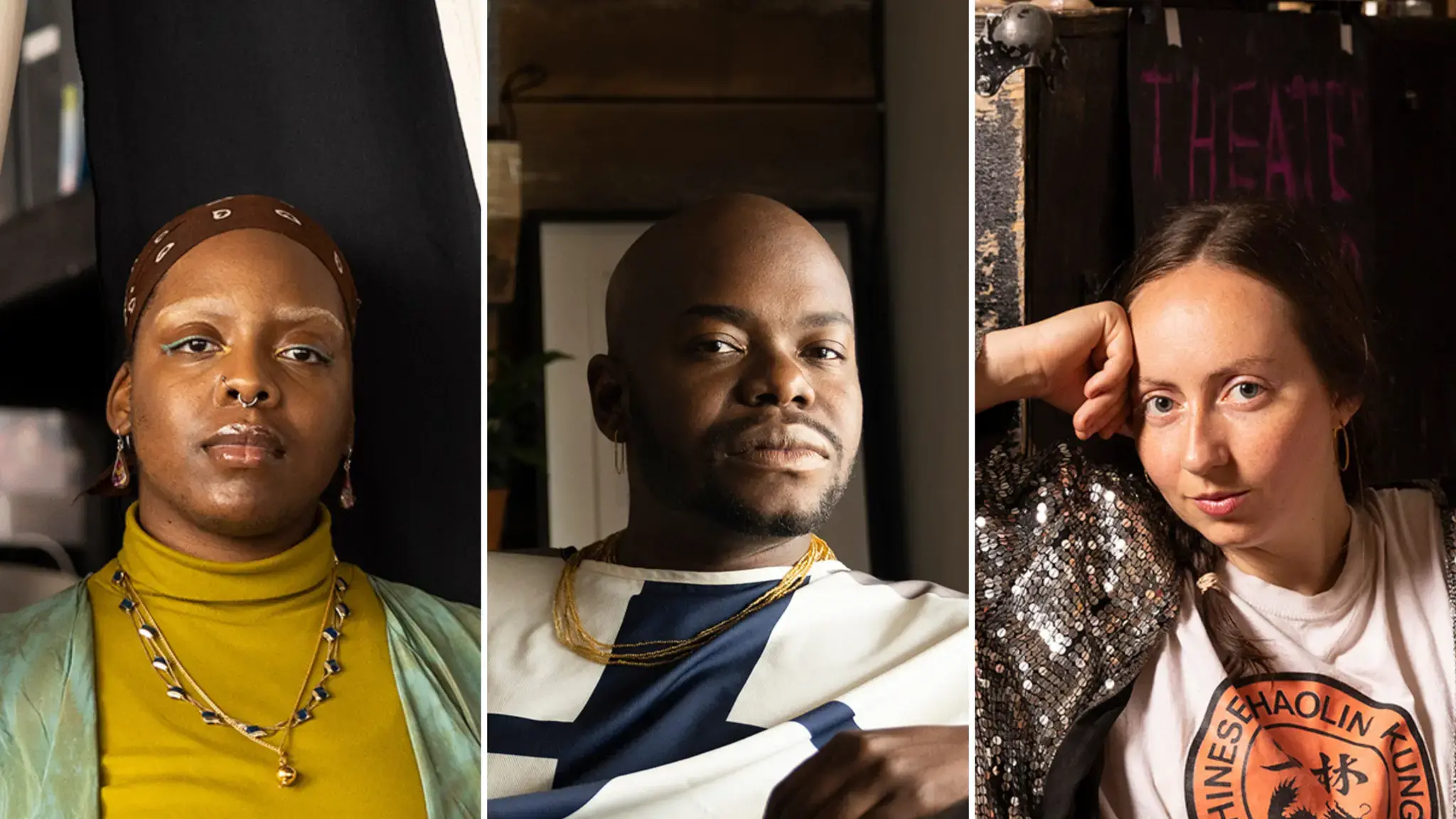
![Pew Fellow Alexandra Tatarsky, [SIGN FELT], Sad Boys in Harpy Land. Photo by Jauhien Sasnou/Picturebox Creative.](https://www.pewcenterarts.org/sites/default/files/styles/lg_1280x1024_webp/public/alexandra-tatarsky-2020-01-cropped.jpg.webp?itok=d20Qr_SK)
